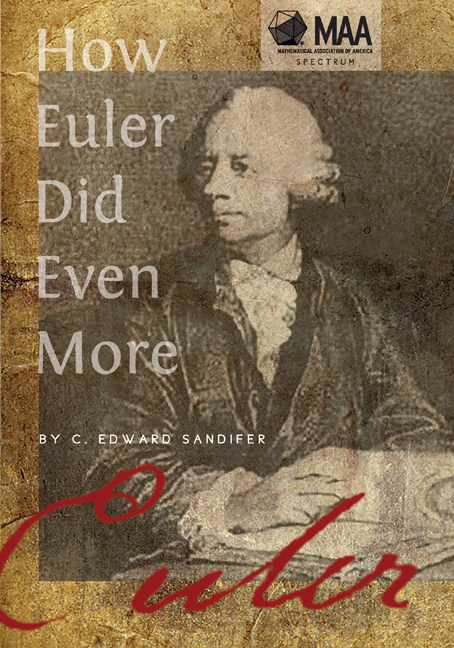Book contents
- Frontmatter
- Contents
- Preface
- Part I Geometry
- 1 The Euler Line (January 2009)
- 2 A Forgotten Fermat Problem (December 2008)
- 3 A Product of Secants (May 2008)
- 4 Curves and Paradox (October 2008)
- 5 Did Euler Prove Cramer's Rule? (November 2009—A Guest Column by Rob Bradley)
- Part II Number Theory
- Part III Combinatorics
- Part IV Analysis
- Part V Applied Mathematics
- Part VI Euleriana
- About the Author
2 - A Forgotten Fermat Problem (December 2008)
from Part I - Geometry
- Frontmatter
- Contents
- Preface
- Part I Geometry
- 1 The Euler Line (January 2009)
- 2 A Forgotten Fermat Problem (December 2008)
- 3 A Product of Secants (May 2008)
- 4 Curves and Paradox (October 2008)
- 5 Did Euler Prove Cramer's Rule? (November 2009—A Guest Column by Rob Bradley)
- Part II Number Theory
- Part III Combinatorics
- Part IV Analysis
- Part V Applied Mathematics
- Part VI Euleriana
- About the Author
Summary
The early French mathematician Pierre de Fermat (1601–1665) is well known for his misnamed “Last Theorem,” the conjecture that if n > 2, then the equation
xn + yn = zn
has no nonzero integer solutions. Many of us also know “Fermat's Little Theorem,” that if p is a prime number that does not divide a number a, then p divides ap−1 − 1.
It is less well known that Fermat left dozens, perhaps even hundreds of problems and conjectures for his successors. Typically, Fermat would state a problem in a letter to a friend. Sometimes he would claim that he had a solution or a partial solution. Other times he made no such claim. Many of Fermat's problems fell to the new methods of calculus discovered by Newton and Leibniz in the decade after Fermat died. Most of the rest of them were solved in the 18th century, many by Euler. The so-called “Last Theorem” remained unsolved until the 1990s.
This month we look at one of Fermat's other problems, a problem in geometry that Euler solved in 1747 or 1748. Euler had apparently been reading a collection of Fermat's letters, [Fermat 1658, Fermat 1894, pp. 402–408] for he writes “A certain proposition is found in Fermat's collected letters, which he proposed to be demonstrated by geometers,” and that “up to now, no demonstration of it has ever been provided.” Euler claims that a proof “by analysis,” by which he means analytic geometry, is easy, but that he will give an old-fashioned geometric proof. Indeed, his proof, and even the style of his writing, is more like the 17th century than his own 18th century.
As stated in undated letter (probably June 1658) from Fermat to Kenelm Digby, the problem is this. Let AN B be a semicircle with diameter AB and where N bisects the semicircumference (See Fig. 1, taken from [Fermat 1896, p. 406]).
Information
- Type
- Chapter
- Information
- How Euler Did Even More , pp. 10 - 17Publisher: Mathematical Association of AmericaPrint publication year: 2014
